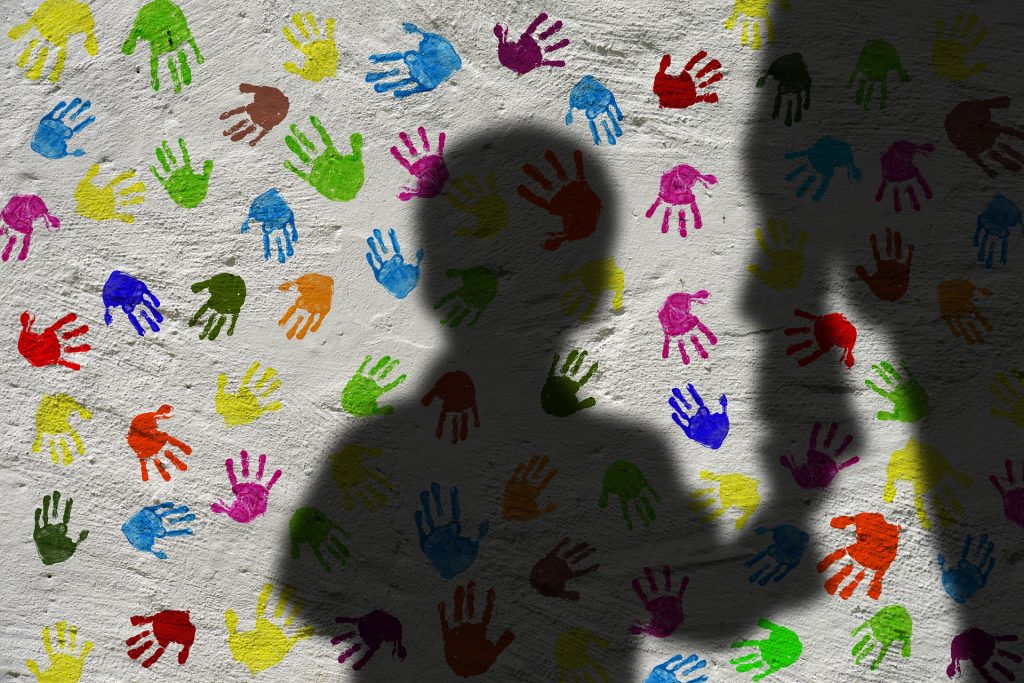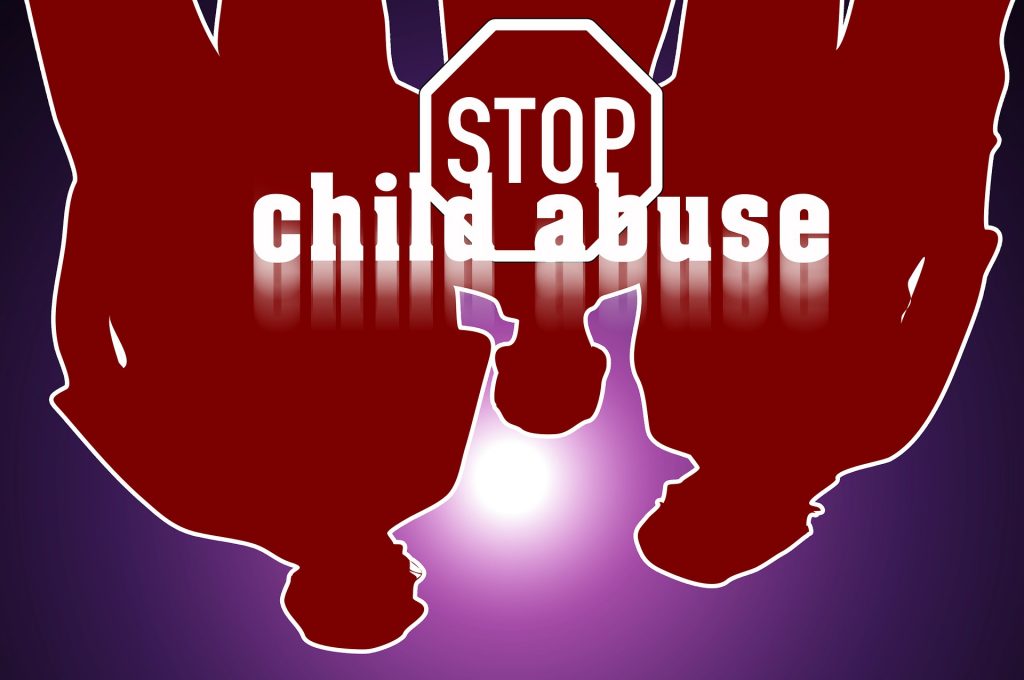by Dr. Anchal Goyal; Editor(s): Dr. Amber D. Gray, Tabitha M. Chapman
What is the Impact of Abuse on Children?
Child sexual abuse (CSA) and assault currently affect 1 in 4 girls and 1 in 13 boys before the age of 18 in the United States (Centers for Disease Control and Prevention (CDC), 2021). The effects of CSA are both immediate and long-term. In childhood, CSA has been associated with a multitude of deleterious outcomes including low self-esteem and self-efficacy, maladaptive coping, post-traumatic stress disorder, and suicidal ideation (Russell, Higgins, & Posso, 2020). A serious outcome of CSA is often revictimization in adulthood (Scoglio, Kraus, Saczynski, Jooma, & Molnar, 2021).

A meta-analytic review suggests that nearly half of survivors of CSA are sexually revictimized in adulthood (Walker, Freud, Ellis, Fraine, & Wilson, 2017). Additionally, studies indicate that there is a 2- to 13-fold increased risk of victimization in adulthood with female CSA survivors compared to females without a history of CSA (Scoglio et al., 2021). Researchers have found that recurrence is associated with later difficulties in interpersonal relationships and acute psychiatric problems (Wildfeuer, Kobulsky, & Reyes, 2021). Thus, child sexual abuse prevention interventions, policies, or strategies should include prevention focused on eliminating revictimization among children who have already experienced sexual abuse.
What are the Factors Associated with Child Sexual Abuse and Its Recurrence?
Child sexual abuse has been widely cited as a public health problem. To prevent child sexual abuse and its recurrence, we must understand and address the factors that put people at risk for. The literature suggests that certain characteristics of the child, maltreatment, family, and community/social systems are associated with child sexual abuse recurrence risk (Wildfeuer et al., 2021).
Risk factors related to the child are mental health concerns, sexual and high-risk behavior, and being a girl (Murray, Nguyen, & Cohen, 2014; Wildfeuer et al., 2021).

the relationship of the perpetrator to the victim
Risk factors related to characteristics of the maltreatment include the relationship of the perpetrator to the victim (e.g., victim’s stepfather, mother’s boyfriend, or babysitter), the geographic location of the sexual abuse (e.g., victim’s home, the babysitter’s home, or the victim’s school), prior emotional abuse, and severity of initial sexual abuse (Scoglio et al., 2021; Wildfeuer et al., 2021). Risk factors related to the family are the parental history of sexual abuse, domestic violence, family hearing, and vision problems, the presence of a non-caregiver adult in the home, and changes in the child’s caregivers (Murray et al., 2014; Wildfeuer et al., 2021).
Lastly, risk factors related to the community/social systems are active or prior child welfare involvement, prior law enforcement involvement, and receiving mental health treatment (Russell et al., 2020; Wildfeuer et al., 2021).
Furthermore, protective factors identified in the literature were few, and only occurred in the context of the family. The protective factors were family social supports and the parent believing the authenticity of the child’s initial sexual abuse (Scoglio et al., 2021). Overall, research indicates that prevention, including child-, caregiver-, and perpetrator-focused strategies, should be employed to mitigate the risk factors and enhance the protective factors for child sexual abuse and its recurrence (Scoglio et al., 2021; Wildfeuer et al., 2021).
“Child sexual abuse (CSA) and assault currently affect 1 in 4 girls and 1 in 13 boys before the age of 18 in the United States…”
(Centers for Disease Control and Prevention (CDC), 2021)
Preventing Child Sexual Abuse and Its Recurrence
Several studies show that the most effective policies aimed at child sexual abuse and its recurrence focus on prevention efforts. The most effective prevention efforts occur when children receive a school-based prevention program in conjunction with the involvement of a caring adult (Fortson, Klevens, Merrick, Gilbert, & Alexander, 2016). Research shows that developing public policies that facilitate healthy caregiver child relationships and support parents raising children in difficult conditions can create safe, stable, nurturing relationships, and environments for children (Hendrikson & Blackman, 2015). Some common approaches to prevent child sexual abuse and its recurrence include education and training focused on adults and programming focused on skills training in children (Russell et al., 2020).
Adult-Focused Education: Adult-focused prevention programs focus on giving adults the knowledge and skills to identify the signs of abuse and refer to appropriate services. In addition, the program ensures a strong bond between parents/caregivers and children that promotes communication (Rudolph, Zimmer-Gembeck, Shanley, & Hawkins, 2018). Research shows that when parents/caregivers teach their children about sexual abuse, they decrease the likelihood that the child will be victimized. Increasing children’s knowledge of sexual abuse also creates an environment in which the child is more comfortable disclosing abuse or other threatening behaviors.

Child-Focused Skills Training: The goal of child-focused programming is to empower children through increased knowledge of strategies that prevent victimization and to create an atmosphere that results in increased disclosure when abuse does occur (Letourneau, Schaeffer, Bradshaw, & Feder, 2017). Studies indicate that a child who is empowered with higher self-esteem is more likely to disclose abuse or may reject abuse attempts (Dale et al., 2016). A child with high self-esteem may be making it more difficult for perpetrators to rationalize their actions and commit the abuse (Rudolph et al., 2018).
Additionally, research suggests that trauma-focused psychotherapies, including trauma-focused cognitive behavioral therapy, help improve the negative psychological effects and mental health symptoms associated with childhood sexual abuse (Gillies et al., 2016; Wildfeuer et al., 2021). Trauma-focused cognitive-behavioral therapy is a hybrid model that integrates elements of exposure-based, cognitive-behavioral, affective, humanistic, attachment, family, and empowerment therapies into a treatment designed to address the unique needs of children with problems related to traumatic life experiences such as sexual abuse (Gillies et al., 2016; Murray et al., 2014). As given evidence suggesting that child mental health symptoms increase risk for recurrence, such strategies may serve as tertiary prevention (Wildfeuer et al., 2021).

Implications and Future Directions
Fostering parental care before and after childhood victimization experiences may help to reduce risk of revictimization for that child in adolescence and adulthood (Scoglio et al., 2021). In addition, addressing and attempting to prevent co-occurring maltreatment, risky sexual behavior, and other coping methods will both improve functioning over time and reduce the risk of future victimization experiences (Letourneau et al., 2017).
The primary prevention programs that governments and non-government agencies begin utilizing should go beyond school-based protective behaviors programs. The programs should be linked to a broader framework for comprehensive prevention that includes improving conditions of safety for children, such as building engagement with parents and the broader community (Rudolph et al., 2017). Future research must evaluate various strategies to prevent child sexual abuse and its recurrence.
References
Centers for Disease Control and Prevention. (2021, April 30). Preventing Child Sexual Abuse. https://www.cdc.gov/violenceprevention/childsexualabuse/fastfact.html
Dale, R., Shanley, D. C., Zimmer-Gembeck, M. J., Lines, K., Pickering, K., & White, C. (2016). Empowering and protecting children by enhancing knowledge, skills and well-being: A randomized trial of learn to BE SAFE with Emmy. Child Abuse & Neglect, 51, 368–378. https://doi.org/10.1016/j.chiabu.2015.07.016
Fortson, B. L., Klevens, J., Merrick, M. T., Gilbert, L. K., & Alexander, S. P. (2016). Preventing child abuse and neglect: A technical package for policy, norm, and programmatic activities. National Center for Injury Prevention and Control, Centers for Disease Control and Prevention. http://www.cdc.gov/violenceprevention/pdf/can-prevention-technical-package.pdf
Gillies, D., Maiocchi, L., Bhandari, A. P., Taylor, F., Gray, C., & O’Brien, L. (2016). Psychological therapies for children and adolescents exposed to trauma. The Cochrane database of systematic reviews, 10(10), CD012371. https://doi.org/10.1002/14651858.CD012371
Hendrikson, H. & Blackman, K. (2015). State Policies Addressing Child Abuse and Neglect. National Conference of State Legislatures. https://www.ncsl.org/Portals/1/Documents/Health/StatePolicies_ChildAbuse.pdf
Letourneau, E. J., Schaeffer, C. M., Bradshaw, C. P., Feder, K. A. (2017). Preventing the onset of child sexual abuse by targeting young adolescents with universal prevention programming. Child Maltreatment, 22. https://doi.org/10.1177/1077559517692439
Murray, L. K., Nguyen, A., & Cohen, J. A. (2014). Child sexual abuse. Child and adolescent psychiatric clinics of North America, 23(2), 321–337. https://doi.org/10.1016/j.chc.2014.01.003
Rudolph, J., Zimmer-Gembeck, M. J., Shanley, D. C., & Hawkins, R. (2018). Child Sexual Abuse Prevention Opportunities: Parenting, Programs, and the Reduction of Risk. Child Maltreatment, 23(1), 96–106. https://doi.org/10.1177/1077559517729479
Russell, D., Higgins, D., & Posso, A. (2020). Preventing child sexual abuse: A systematic review of interventions and their efficacy in developing countries. Child Abuse & Neglect, 102(5), 104395. https://doi.org/10.1016/j.chiabu.2020.104395
Scoglio, A. A. J., Kraus, S. W., Saczynski, J., Jooma, S., & Molnar, B. E. (2021). Systematic Review of Risk and Protective Factors for Revictimization After Child Sexual Abuse. Trauma, Violence, & Abuse, 22(1), 41–53. https://doi.org/10.1177/1524838018823274
Walker, H. E., Freud, J. S., Ellis, R. A., Fraine, S. M., & Wilson, L. C. (2017). The prevalence of sexual revictimization: A meta-analytic review. Trauma, Violence, & Abuse, 20, 67–80. https://doi.org/10.1177/1524838017692364
Wildfeuer, R., Kobulsky, J. M., & Reyes, J. N. (2021). Child Sexual Abuse Recurrence: A Narrative Review. Common Health, 2(2), 67-77. https://doi.org/10.15367/ch.v2i2.486
